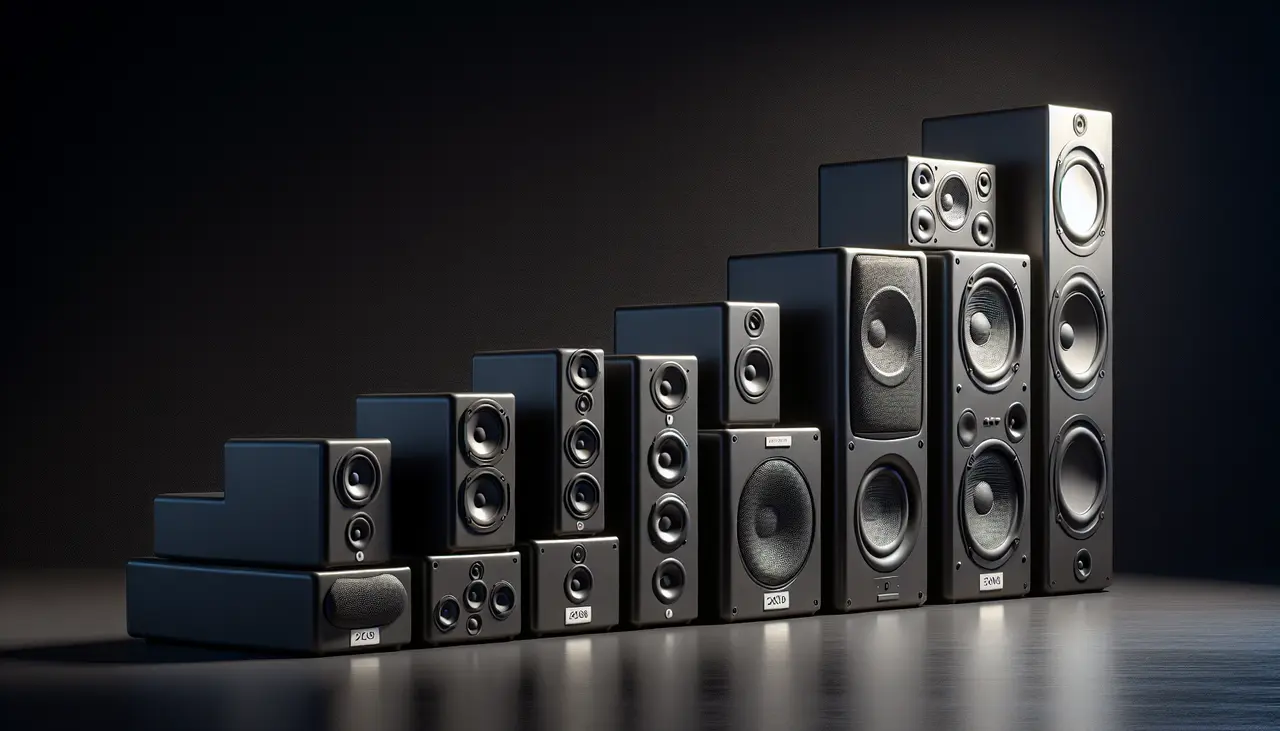
Introduction to Home Theater Speakers
Back in the day, home theater speakers were massive, bulky things that took up more room than your actual TV. Fast forward, and now we’re looking at sleek, barely-there audio systems that still pack a mighty punch. The journey from those big boxes to today’s slim soundbars and invisible in-wall speakers is quite a story. Initially, speakers were built for volume and power, not for blending into your living room decor. They stood tall and wide, often becoming the room’s focal point for all the wrong reasons. But as technology advanced, so did the design and functionality of home theater speakers. Now, it’s all about creating immersive sound experiences without cluttering the space. Whether it’s a soundbar that complements your flat-screen TV or satellite speakers that blend into your walls, today’s home theater systems are designed to be heard, not necessarily seen. We’ve witnessed a remarkable transformation, driven by the desire for quality sound and an uncluttered living space.
The Early Days of Home Theater Speakers: Bulky and Boxy Designs
Back in the early days, home theater speakers were big, boxy, and bulky. These heavy speakers took up a lot of room, and their design was more about function than form. They were built to fill a room with sound, but they didn’t win any beauty contests. The technology of the time limited how small and sleek speakers could be, so manufacturers focused on making them powerful. Sound quality was king, and these large speakers delivered. However, they often required significant space and weren’t easy to blend into a home’s decor. This era laid the foundation for the extraordinary advancements in speaker technology we see today.
Breakthroughs in Technology: How Speakers Began to Evolve
Back in the day, speakers were mammoth; think big, boxy, and bulky, taking up more room than a piece of furniture. But tech doesn’t stand still. It races forward. The turning point came with advances in material science and digital technology. Suddenly, manufacturers could make smaller, yet more powerful, speakers. We’re talking materials like neodymium magnets, which pack a powerful punch without the heft. And with digital signal processing (DSP), sound could be fine-tuned to perfection, squeezing out every bit of quality from those smaller units. This combo of new materials and smart tech paved the way for the sleek, compact speakers we take for granted today. In a nutshell, speakers shed their bulky exteriors without compromising on sound, thanks to some serious technological wizardry.
Compact and Powerful: The Rise of Sleeker Designs
Gone are the days of massive speakers taking up all the corner space in your living room. Today, speaker design has taken a huge leap. Now, we have speakers that not only pack a punch in sound quality but also come in sleek, minimal designs. This shift wasn’t overnight. It’s the result of years of tech innovation and a changing taste in home aesthetics. People wanted something that sounded great but didn’t look like a bulky piece of furniture. Brands listened and started crafting speakers that blend into modern decor seamlessly. The focus has shifted towards creating compact speakers that deliver high-quality sound without the bulk. This means you can enjoy your favorite movies or music with crystal clear sound, all while maintaining a stylish living space. It’s all about getting the best of both worlds.
From Wires to Wireless: The Revolution in Connectivity
Gone are the days of tripping over cables and spending hours trying to hide unsightly wires around your living room. The leap from wired to wireless home theater speakers marks a significant shift in how we experience sound at home. This revolution in connectivity isn’t just about looks; it’s about simpler setup, cleaner aesthetics, and the flexibility to place speakers anywhere without worrying about reaching the nearest power outlet or audio source. Initially, wireless technology faced skepticism, with audiophiles worrying about sound quality loss over wireless connections. But tech advancements have squashed those fears. Today, wireless home theater systems deliver sound quality that rivals, and sometimes even surpasses, their wired counterparts. This shift means your speakers can now seamlessly blend into your home decor, moving with you from room to room, easily adapting to your evolving interior design without compromise.
Surround Sound Systems: Immersing Audiences in Audio
Surround sound systems changed the game. Before, you had to go to the movies to feel sound come at you from all directions. Now, you can get that same feel sitting on your couch at home. It started simple — three speakers: left, right, and center. Then, technology said, “Let’s add more.” So, they threw in a couple more speakers, and suddenly, you’re not just watching a movie; you’re in it. The sounds of footsteps behind you, rain from above, or a car zooming past, it’s all there, wrapping around you like a blanket of sound. Most systems now use a 5.1 or 7.1 setup. That’s tech speak for how many speakers you’ve got. The “5” or “7” stands for the speakers around you, and the “.1” is the subwoofer, which gives you those deep, rumbling sounds. Getting yourself a surround sound system doesn’t just mean buying a bunch of speakers and throwing them in a room. Where you place them matters. You’ve got to think about where you’ll sit and arrange everything so the sound hits you just right. It’s like setting up your personal concert hall. And with the tech getting sleeker, these speakers don’t have to stick out like sore thumbs. They blend in, giving you that immersive sound without cluttering up your space.
Smart Technology Integration: Speakers in the Digital Age
Smart speakers aren’t just speakers anymore; they’ve become the center of our digital lives at home. Gone are the days when speakers were just about sound. Today, they’re smart. They connect with your home network and can be controlled by your voice, smartphone, or even gestures. This means you can play music, set alarms, check the weather, and even control your lights or thermostat without moving an inch. The real kicker? You can group multiple speakers to play the same tune in every room or different music in each one, all in sync. Brands like Amazon Echo and Google Home lead the pack, offering solutions that fit seamlessly into our digital lives. This integration is not just convenient; it transforms our living spaces into smart homes, making our daily routines easier and more enjoyable. The price? More affordable than you’d think, making smart speakers a go-to choice for upgrading how we live and interact with our homes in the digital age.
The Importance of Design Aesthetics in Modern Speakers
The way speakers look matters just as much as how they sound. Gone are the days when big, clunky speakers took up too much room and clashed with modern decor. Today, design plays a key role in speaker selection. Manufacturers strive to create speakers that not only deliver high-quality sound but also blend seamlessly into our living spaces or make a stylish statement. Whether it’s sleek, minimalist designs that appeal to contemporary tastes or compact, portable options that fit into our on-the-go lifestyle, the aesthetics of modern speakers cannot be ignored. This focus on design meets the demand for tech that complements our personal style and the interiors of our homes. So, when you choose speakers now, you’re not just picking out a sound system – you’re selecting a piece of decor that enhances your space visually and acoustically.
Future Trends: What’s Next for Home Theater Speakers?
In the rapidly advancing world of technology, home theater speakers are no exception to evolution. Looking ahead, expect sleeker, more integrated systems. Companies are pushing the limits to create speakers that not only deliver exceptional sound quality but also blend seamlessly with modern interiors. Wireless technology will continue to dominate, doing away with the clutter of cables and offering the ultimate convenience in setup and placement flexibility. Additionally, the rise of smart home integration means future speakers will likely be part of larger systems, easily controlled with voice commands or through smartphone apps. Immersive sound experiences, such as 3D audio and Dolby Atmos, which make you feel like you’re in the middle of the action, are set to become standard features. Moreover, sustainability will drive innovation, with manufacturers focusing on eco-friendly materials and energy-efficient designs. So, for home theater enthusiasts, the future promises not just better sound but smarter, more responsible technology that complements the digital lifestyle.
Conclusion: How Far Home Theater Speakers Have Come
We’ve journeyed from the big, bulky speakers of the past to today’s sleek, high-fidelity sound systems. A significant transformation, wouldn’t you agree? Gone are the days when home theater speakers took up too much space and clashed with room aesthetics. Nowadays, speakers blend seamlessly into our living spaces, offering both beauty and beastly sound quality. We’re talking about compact, stylish designs that deliver powerful, immersive audio. It’s a testament to technological progress and design innovation. From needing a spacious area just for your audio setup, we now enjoy superb sound from devices that could easily pass as art pieces. This evolution isn’t just about looks; it’s about enhanced audio precision, wireless capabilities, and smart home integration, making the listening experience more personal and convenient. What a time to be alive for audiophiles and casual listeners alike!


